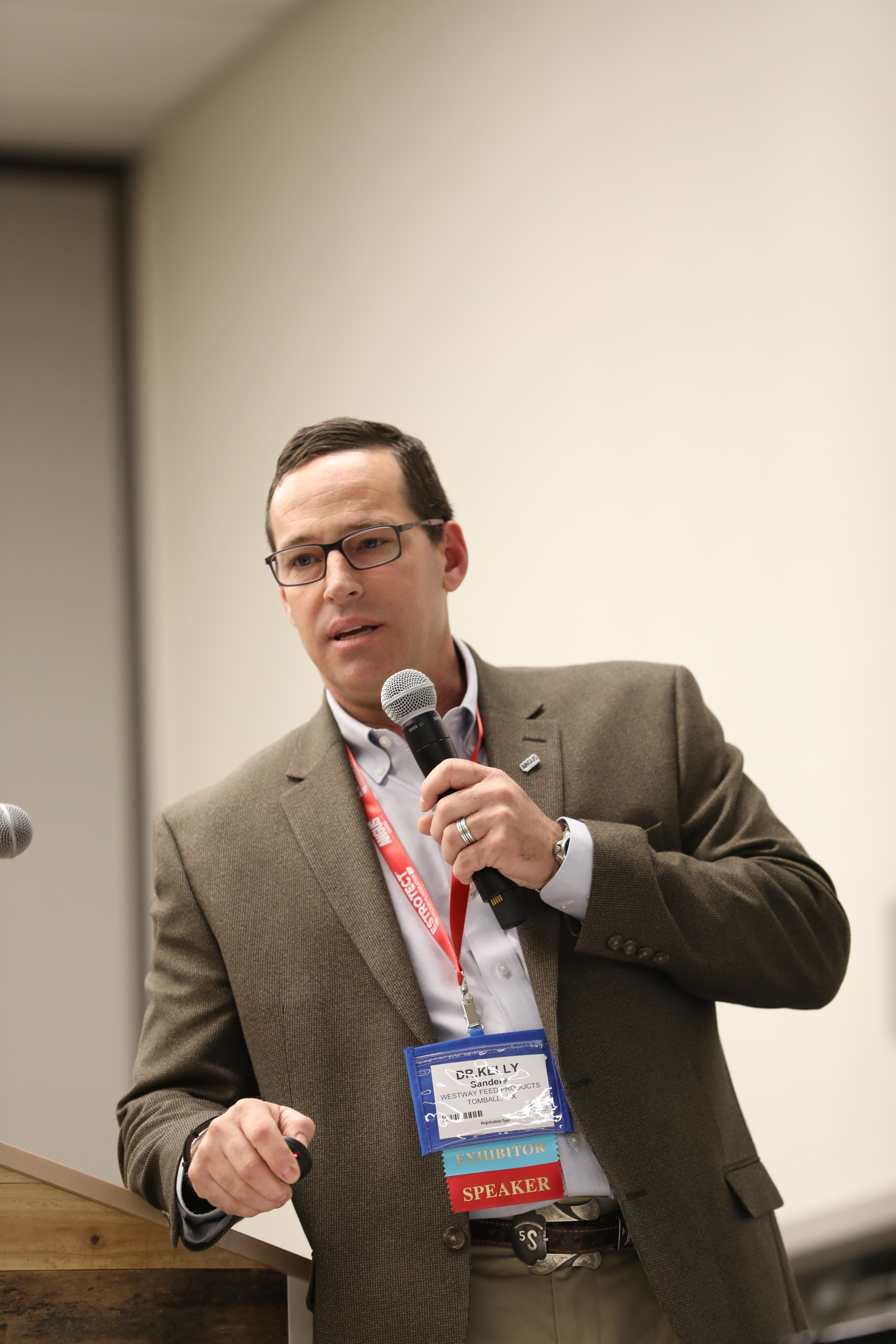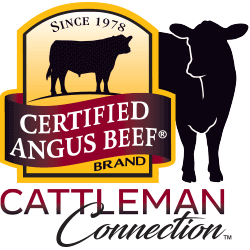
Matching cow herd needs to overall goals
Sanders, Viator talk epigenetics, fetal programing and selection
Story by Miranda Reiman
Control what you can and deal with the rest.
Cattlemen can’t stop drought or hurricanes, but they can set their herd up to be successful during “everyday” challenges.
“We can manage their feed. We can manage their health protocol. We can’t manage their stress,” said Kelly Sanders, Westway Feed Products. “From my feed standpoint, how do I mitigate that problem the best I can?”
Sanders and colleague Cheramie Viator spoke at the Angus Convention, Nov. 2 to 5 in Columbus, Ohio, addressing the importance of providing a cow herd the nutrients they need when they need them.
Sanders talked about epigenetics, or the way a cow’s environment can change the ultimate makeup of the calf she is carrying.
“The DNA remains the same. What happens is, whether its nutritional problems or stresses in that animal, it basically can mess up the packet or the translations or transcription of the DNA,” he said.
It’s not a new concept and was first discovered in humans by analyzing health records from babies born toward the end of World War II. During the hongerwinter, when the Germans cut off Dutch food shipments, most of the population received about 30% of their caloric requirement.
“When they went back and studied the ladies that were under this malnutrition…children that came from them had a lot of health problems,” Sanders said, noting they correlated certain trimesters with specific challenges, such as cardiovascular disease and diabetes.
In cattle, researchers are looking to determine what level of nutritional stress—and during which trimesters—affects everything from subsequent reproduction in breeding animals to quality grade in fed steers and heifers.
“A lot of stuff goes in the first trimester, because that’s when the heart’s put together and developed, all the interior organs, a lot of the muscle fiber is developed during that timeframe,” Sanders said. Marbling cell development happens during the third trimester.
Studies have tracked what feeding 60% and 70% of cow energy requirement does to future progeny.
But how can producers be sure they don’t put that kind of stress on their herd?
It starts with selecting cattle that are well adapted, Viator said.
“Match your cow to your environment and your production system, and match your bull to your endpoint,” she suggested, noting it’s a good idea to develop females in a similar environment to their permanent one.
It’s up to seedstock producers to help other cattlemen assess which genetics are a good fit.

“We need to think about our customer’s production environment,” Viator said. “Don’t sell into a production environment where they’re not going to survive.”
That means considering everything from forage type and temperature swings to water quality.
Then, individual ranchers need to understand the energy requirements of their cattle, she said.
“We chase size and growth, and I’m all about it, but when we do—the more we push that spread—the more we increase the genetic requirement of our cattle,” she said.
Surveying breeders who have made it in the industry for 50 years or more, Viator said she found a common thread: “Optimums versus maximums.”
Finding the right amount of milk or growth for your environment is more sustainable than finding the very most or highest for those traits.
“Sometimes optimum is much more profitable in the long-term than the maximum is today,” she said.
The key is correctly using genetic tools and making smart decisions.
“Sometimes it’s fun to think about what’s really neat and what’s really popular, but sometimes we have to take a step back and think about what really works,” Viator said.
you may also like
Marbling, Feet and Fertility: Are they related?
The Angus breed has enough genetic diversity to allow breeders, and their commercial bull customers, to make progress across multiple traits simultaneously. One bloodline may be high in marbling but does not check the boxes you need for other traits. That does not mean marbling is the cause—it simply means your search for the ideal genetic pairing is not done.
Working for Premiums
The commercial Angus rancher from Collyer, Kansas, came back for daily homework in 1999 after a year at college. For 25 years now, he’s studied all the ways to grow his family’s W6 Cattle cow-calf herd with Angus at the base. Guided by data, Walt worked to improve the herd from zero Primes to averaging 60 percent. Learning what drives premiums prompted improvement.
Get BQA’d, Meet Coach Tang at Hy-Plains Feedyard
Get BQA’d, or renew an expired certification, on Wednesday afternoon, August 21, 2024, at Hy-Plains Feedyard in Montezuma, Kan. Hear from Jerome Tang, K-State’s men’s basketball coach, about how it takes every player on a team to win. The workshop is free to attend and will offer simultaneous Spanish interpretation.



